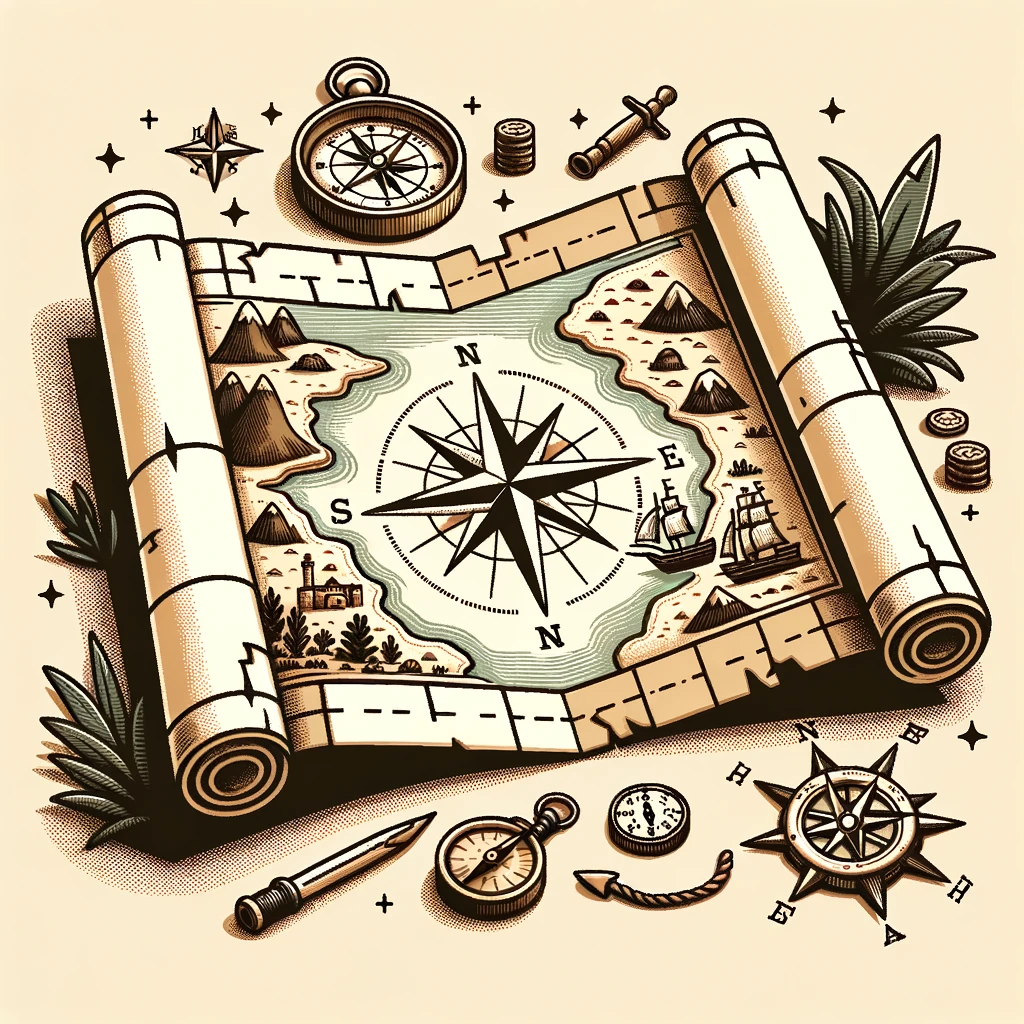The Role of AI in Historical Data Analysis
In the ever-evolving landscape of data analysis, **AI** has emerged as a transformative force, particularly in the realm of historical data. With its incredible capacity to process vast datasets, identify patterns, and predict trends, AI is revolutionizing how historians, researchers, and data analysts approach historical information. This introductory exploration dives into the practical applications, benefits, and challenges of leveraging AI in historical data analysis.
Historical Context of Data Analysis
Data analysis has long been a crucial part of understanding human history. Historically, data collection relied on manual processes, with scholars meticulously poring over records, documents, and artifacts to glean insights. **AI’s arrival** marks a new chapter, offering tools that amplify the capabilities of traditional methods. However, understanding its full potential necessitates a look at the journey from past to present.
Key Benefits of AI in Historical Data Analysis
AI introduces a suite of benefits that fundamentally change the nature of historical data analysis:
Speed and Efficiency: AI algorithms can process immense amounts of data much faster than human analysts.
Pattern Recognition: Machine learning models can identify patterns that might elude human observers.
Predictive Insights: By analyzing past trends, AI can forecast future occurrences, offering invaluable foresight.
Challenges Faced by AI in Historical Analysis
The integration of AI into historical data analysis is not without its challenges. These barriers often stem from the unique nature of historical data itself:
Data Quality: Historical datasets may be incomplete or contain inaccuracies, which can compromise AI’s effectiveness.
Interpretative Limitations: AI lacks the nuanced understanding of cultural and contextual subtleties that human historians possess.
Ethical Concerns: The use of AI in handling sensitive historical data raises questions about privacy and interpretation of past events.
Applications of AI in Historical Data Analysis
AI’s adaptability ensures its use across a broad spectrum of historical analysis applications:
Archaeological Discoveries: AI can assist in piecing together fragmented archaeological data to reconstruct historical contexts.
Textual Analysis: Natural language processing (NLP) helps decode ancient texts, providing translations and insights more rapidly.
Predictive Models: Drawing on historical data to forecast climate patterns or societal trends, AI offers glimpses into potential futures.
In grappling with these applications, it becomes essential to understand how AI methodologies are tailored to address specific historical inquiry needs. Moving forward, let’s take a deeper dive into some real-world examples of how this fusion of AI and history is creating new opportunities and challenges alike.
As the digital era paves the way for unprecedented access to vast swathes of historical data, the role of artificial intelligence (AI) in **historical data analysis** continues to grow exponentially. Researchers and analysts are now able to unlock new insights and draw inferences from the past with a level of precision that was unimaginable just a decade ago. Following the exploration of AI’s impact on historical studies in previous discussions, we now delve deeper into the practicalities and implications of AI in the comprehensive analysis of historical datasets.
Transforming Historical Data with AI
Historical data, often stored in unstructured formats such as PDFs, manuscripts, and handwritten notes, **poses significant challenges** for traditional analysis methods. AI, through tools like Natural Language Processing (NLP) and Optical Character Recognition (OCR), is transforming these historical records into structured datasets that can be easily accessed and studied.
Increased Accuracy: AI algorithms improve the accuracy of data extraction, minimizing human errors.
Enhanced Speed: Processing times are drastically reduced, facilitating quicker analysis.
Accessibility: AI makes historical data available to a broader audience, fostering inclusive research opportunities.
AI Techniques Utilized in Historical Data Analysis
The integration of various AI techniques has broadened the scope of historical analysis, enabling **more nuanced examinations** of data:
Natural Language Processing (NLP): By employing NLP, historians can analyze text from different eras and dialects, providing deeper understanding of cultural contexts.
Machine Learning (ML): ML models help identify patterns and trends, offering predictive insights that inform modern interpretations of historical events.
Image Recognition: AI can decipher texts from images, even those with complex backgrounds, preserving critical information from historical photographs and documents.
Visualizing Historical Data through AI
One of the most compelling features of AI-powered historical data analysis is its capacity for data visualization. By crafting visual narratives through charts and graphs, AI allows researchers to communicate complex historical trends effectively.
AI in Data Analysis
Ensuring SEO and Accessibility
When utilizing AI for historical analysis, it is essential to maintain high SEO standards and accessibility:
Descriptive Metadata: Ensure the inclusion of descriptive and context-rich metadata for SEO optimization.
ARIA Labels: Use ARIA labels to enhance accessibility, making historical data comprehensible and navigable by all users.
Case Studies and Real-World Applications of AI in Historical Analysis
AI’s role in historical data analysis is not theoretical but has tangible applications in various fields:
Archaeological Discovery: AI models predict potential archaeological sites, expediting historical discoveries.
Socio-cultural Research: Researchers use AI to analyze ancient texts, revealing insights into past social norms and lifestyle patterns.
Digital Archiving: AI assists in cataloging and preserving historical documents digitally, ensuring long-term availability.
Progressive Integration of AI in Historical Studies
As we delve further into the integration of Artificial Intelligence (AI) in the realm of historical data analysis, it’s crucial to explore how these advances are reshaping our comprehension of the past. With AI, historians are not only able to analyze vast datasets more efficiently, but they are also uncovering patterns and insights that were previously hidden.
Case Studies and Real World Applications
Recent case studies exemplify the power of AI in transforming historical research methodologies:
**Deciphering Ancient Texts:** AI has been instrumental in translating ancient scripts that were once indecipherable, utilizing machine learning algorithms to recognize language patterns and context.
**Digital Reconstruction of Artifacts:** Advanced AI modeling enables historians to digitally reconstruct artifacts from fragmented remains, offering a more complete visual representation of cultural heritage.
Technological Tools and Platforms
Navigating the digital landscape of historical data requires sophisticated tools. Here are some of the most promising AI-driven platforms currently in use:
Tool
Description
Applications
**TensorFlow**
Open-source platform for AI and machine learning.
Used for pattern recognition and data predictions.
**IBM Watson**
Cognitive computing platform.
Leveraged for analyzing large historical datasets.
Challenges and Ethical Considerations
While AI offers substantial advantages, its use in historical data analysis is not without challenges. Ethical considerations play a significant role:
Data Integrity: Ensuring AI algorithms do not distort historical truths by over-relying on potentially biased data.
Privacy Concerns: Safeguarding sensitive information while analyzing personal data from historical records.
Access to Technology: Bridging the disparities in access to these technologies among historians globally.
The Future of AI in Historical Data Analysis
The continued progression of AI in historical studies promises a future where we can engage with the past in more dynamic ways. Collaborative efforts between technologists and historians will likely drive this innovation, fostering an environment where historical narratives are more richly drawn and understood.
Conclusion
In conclusion, AI’s role in historical data analysis cannot be understated. From uncovering hidden narratives to preserving cultural legacies, AI is a transformative tool enabling historians to explore the complexities of the past with unprecedented precision and creativity. Yet with such power comes great responsibility to ethically and effectively manage this technology in our pursuit of truth and knowledge.
Action Items and Summary
**Adopt Technology:** Encourage the adoption of AI technologies among historians to enhance data analysis capabilities.
**Ethical Frameworks:** Develop comprehensive ethical frameworks to govern the use of AI in historical contexts.
**Collaborative Efforts:** Foster partnerships between historians and technologists to leverage AI in innovative ways.
**Research and Development:** Support ongoing research into new AI applications relevant to historical data analysis.
As historians embrace these new tools, the potential for AI to revolutionize historical analysis will continue to grow, illuminating more of our shared human story than ever before.




